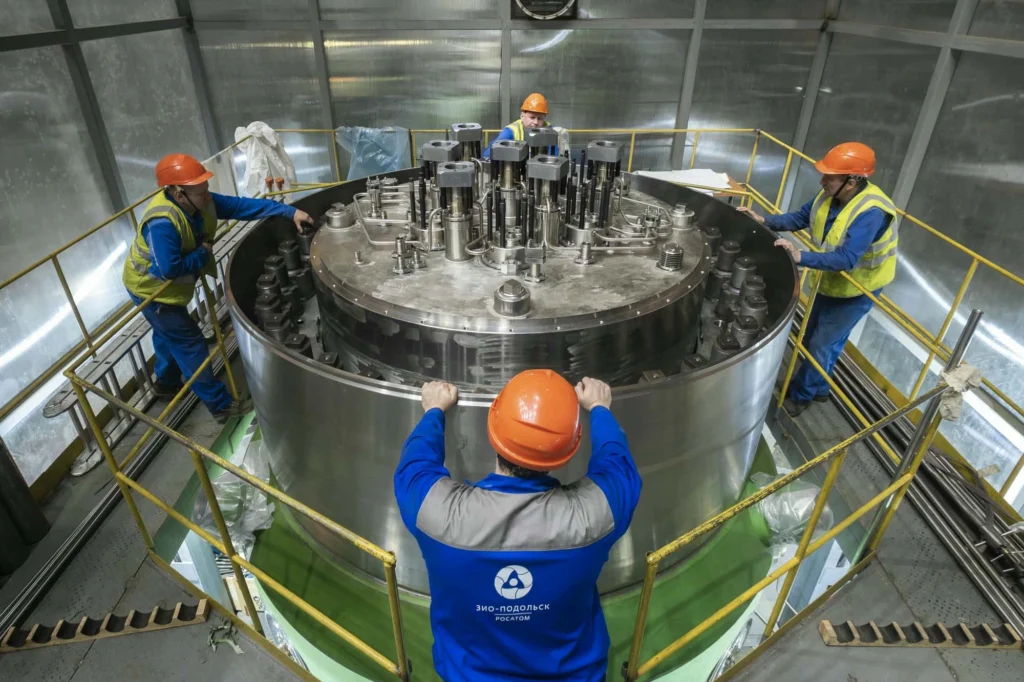Purpose: This article explores the development, strategic goals, and future impact of the Russian nuclear icebreaker “Leader” under Project 10510, with key insights for maritime professionals and Arctic stakeholders.
Russia’s Project 10510 “Leader” Icebreaker: Power, Politics, and the Arctic Frontier
The Arctic is heating up—strategically and economically. As polar routes become more navigable, maritime nations are racing to secure dominance. Russia, with its vast Arctic coastline, has launched an ambitious project: Project 10510 “Leader”, the world’s most powerful nuclear icebreaker.
SeaEmploy, a maritime workforce platform, closely tracks these developments, as they reshape both the shipping industry and geopolitical balance in the Arctic.
What Is Project 10510 “Leader”?
Project 10510 is Russia’s flagship Arctic vessel program. Its goal? To build nuclear-powered ships that can break through 4-meter-thick ice while leading convoys of LNG tankers and heavy freighters.
The first ship, Rossiya, is under construction at the Zvezda Shipyard in Russia’s Far East. Once operational, it will clear a path across the Northern Sea Route (NSR)—a shortcut between Europe and Asia.
Unmatched Power and Design
The Leader-class vessels are titans. Stretching over 209 meters, with a beam of nearly 48 meters, they’re as large as some aircraft carriers. But size isn’t everything. What truly sets them apart is power.
RITM-400 Nuclear Reactors: At the Heart of “Leader”
These icebreakers are powered by two RITM-400 reactors, a new generation of nuclear systems developed by Rosatom. Combined, they deliver 120 megawatts of propulsion—double the power of earlier Arktika-class ships.

That means Leader can break a 50-meter-wide channel through solid Arctic ice, enabling year-round shipping for even the biggest LNG carriers.
Strategic Goals Behind the Icebreaker
Russia sees Arctic access as critical to its future energy exports. LNG terminals in Yamal and future fields in the Laptev and East Siberian seas require reliable shipping lanes, even in the dead of winter.
Rossiya is not just a ship—it’s a statement. With it, Russia can escort oil and gas exports from Arctic fields to China and Europe, bypassing longer Suez routes.
Reducing Arctic Travel Time: NSR Advantage
The Northern Sea Route cuts cargo time between Europe and Asia by up to 40%. That’s days saved and millions in fuel and charter costs. Lider will ensure this route stays open 12 months a year.
For companies like Novatek, Gazprom Neft, and global traders, the commercial gains are enormous. But so are the strategic implications—military, environmental, and logistical.
Cost, Challenges, and Sanctions
At an estimated 127.5 billion rubles ($1.8–2 billion), Lider is Russia’s most expensive icebreaker. The program originally envisioned three ships. As of 2023, that number has been cut to one, largely due to cost and Western sanctions.
Supply Chain Issues & Sanctions
Western restrictions on high-tech marine components have slowed construction. Finding domestic or Chinese substitutes for control systems and specialized steel has taken time and raised costs.
Despite delays, construction on Rossiya continues. Officials project delivery around 2027–2030, depending on funding and political support.
Environmental and Operational Considerations
These icebreakers offer clean nuclear propulsion—but also raise concerns. Waste storage, potential accidents, and environmental oversight remain key questions.
On the other hand, they reduce the carbon emissions associated with heavy diesel-powered vessels breaking ice. Nuclear propulsion enables longer missions without refueling—ideal for long Arctic seasons.
Comparing “Leader” to Other Icebreakers
No vessel on Earth currently matches Leader in power. The U.S. Coast Guard’s Polar Star and future Polar Security Cutters are diesel-electric hybrids with lower icebreaking capacity.
China’s Xue Long 2 is modern but built for research—not escort. Canada’s future heavy icebreakers will focus more on sovereignty than convoy operations.
In short, Russia aims for unmatched Arctic industrial dominance.
What This Means for Seafarers and the Arctic Economy
The rise of Leader may create new jobs and shift Arctic trade routes. SeaEmploy anticipates demand for nuclear-certified crews, ice navigation experts, and Arctic logisticians.
But geopolitical risks remain. Military tensions, sanctions, and climate threats could complicate operations. Still, Arctic shipping is no longer theoretical—it’s happening.
Conclusion: Arctic Power in a Changing World
Leader is not just a ship. It’s a symbol of Russia’s Arctic ambition, its engineering prowess, and its determination to secure the future of Northern trade.
As the world watches climate, energy, and politics collide in the Arctic, this vessel will be at the center of it all.
